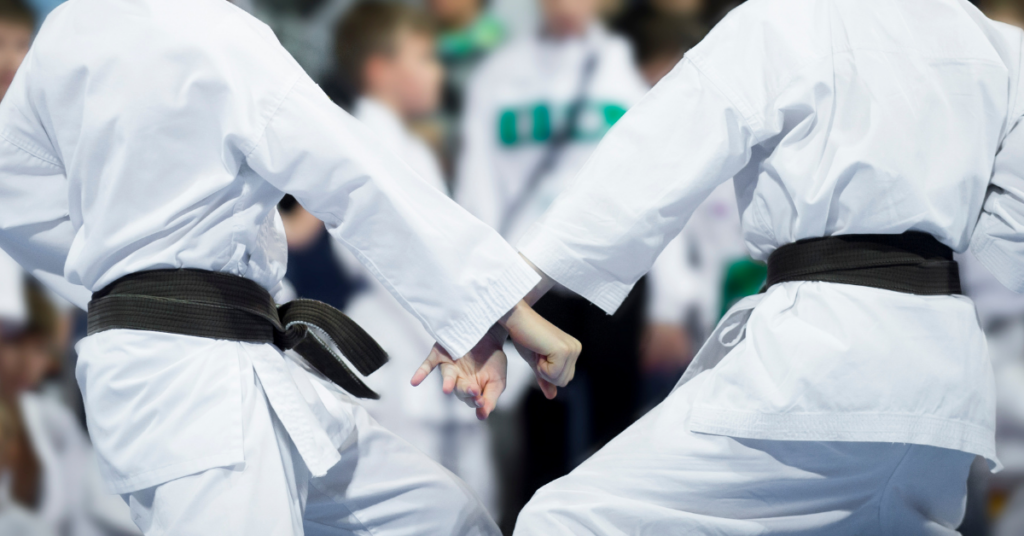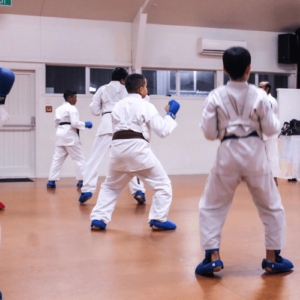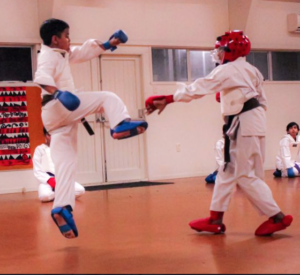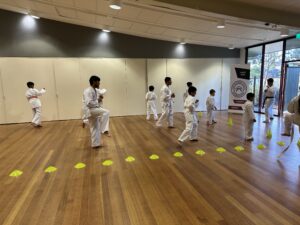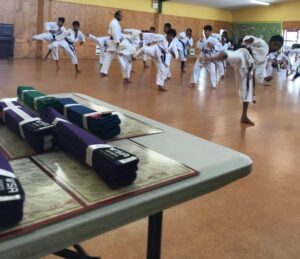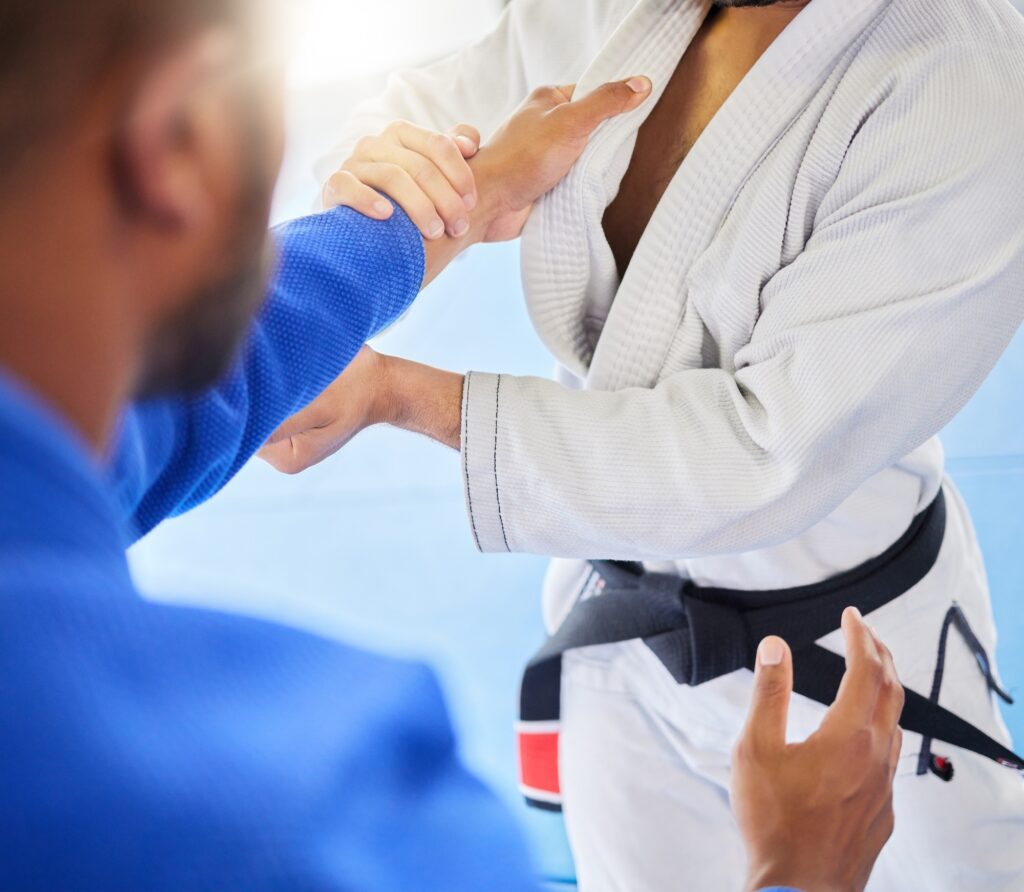

Karate, a type of Japanese martial art, is closely tied to fitness, confidence-building, and personal protection. On the other hand, self-defence training is a broad term that includes forms of sports karate and other martial arts. In Australia, an increasing number of parents are enrolling their children in karate classes. However, some people are looking for self-defence lessons without fully understanding the distinctions.
Although there are parallels, karate and self-defence instruction are not the same thing.
Let’s examine the differences between the two and how they might help the youngster make the best decision on whether they are looking for quick, practical skills for protection, long-term discipline, or fitness.
This blog will explore the key differences between self-defence and karate training, including their objectives, benefits, and potential advantages for personal growth and safety.
What Is Karate?
The striking techniques used in karate, a traditional Japanese martial art, include knee strikes and open-hand manoeuvres, which are often seen in individuals’ demonstrations of kicking and punching. The actual meaning of “karate” is “empty hand.” It means this focus on non-lethal combat.
Karate has become increasingly popular worldwide over the years. However, Australia now offers several reputable karate clubs where children and adults can practice. Karate is now more than simply fighting. It’s a way of life that combines physical training with mental toughness, discipline, respect, and attention to detail.
Here are the core elements of karate.
- Kihon (Basics): Fundamental stances, blows, and moves
- Kata (Forms): Organised movement patterns that mimic assault and defence.
- Sparring, or kumite, is the practice of skills against an opponent.
Philosophy & Discipline: Self-control, persistence, and respect are equally crucial as physical methods.
Karate is taught in steps. As your children progress from one coloured belt to another, they represent real growth. It will be in terms of ability, knowledge, and character; this way, your children progress from the beginning (white belt) to the advanced (black belt).
Learn more about the benefits of children’s karate and how it supports discipline, focus, and self-confidence.
What Is Self-Defence Training?
Self-defence training is a broad term that is not specific to martial arts or karate. At the same time, it’s a collection of techniques designed to keep you safe in all everyday situations, and not limited to self-discipline.
Self-defence is about rapid, efficient techniques that assist you in avoiding or neutralising danger. Adults, college students, and even companies in Australia that prioritise personal safety are fond of these programmes.
Core Elements of Self-Defence Training
- Situational awareness comprises identifying and avoiding potentially unsafe situations.
- Practical Techniques: Making basic actions to disable or run away from a criminal.
- Realistic Scenarios: Prepare for regular street or workplace confrontations, including grabs, pushes, and assaults.
- Legal Awareness: Before opting for another self-defence course, review the relevant Australian laws to understand what is acceptable.
We know that self-defence training is often short-term, practical, and intentless, without requiring years of practice.
What Are the Key Differences Between Karate and Self-Defence?
Both karate and self-defence training help your children to improve safety as well as confidence, but still, let’s understand the key differences:
|
Aspect |
Karate |
Self-Defence |
|
1. Purpose |
Pays attention to long-term martial arts growth, discipline, and fitness. |
Focuses on immediate safety and practical techniques for real-world threats. |
|
2. Structure of Training |
Follows a progressive system with belts, ranks, and katas. |
Usually, short-term courses or workshops are without ranks, belts, or sparring. |
|
3. Time Commitment |
Requires consistent training over months and years for mastery. |
It can often be learned in a matter of weeks through focused training sessions. |
|
4. Techniques |
Structured strikes, blocks, and stances rooted in tradition. |
Quick, instinctive moves like escaping holds, targeting vulnerable areas, and leveraging. |
|
5. Philosophy |
Emphasises respect, patience, mental strength, and personal growth. |
This work focuses on awareness, avoidance, and survival tactics. |
|
6. Suitability |
Suitable for children aged six and above, teens, and adults. |
Best for adults or teens seeking quick, practical protection skills. |
Benefits of Karate
Let’s take a look at the benefits of karate that work best for your strength, flexibility, balance, coordination, and more.
- Attention, patience, and emotional control are all enhanced by mental discipline.
- Confidence: Students gain self-assurance by overcoming increasingly challenging courses.
- Community: Karate dojos in Australia provide an inviting setting for both adults and children.
- Life Skills for Children: Instils qualities that parents value, such as responsibility, respect, and listening.
Self-Defence Training Advantages
Take a look at the best benefits that self-defence training offers:
- Immediate practicality: which allows for the rapid application of skills in real-world situations.
- Confidence in Safety: Students feel more secure whether travelling, strolling alone, or commuting.
- Situational awareness: This will help you defend yourself against random situations that you can also recognise and protect yourself from.
- All-Accessible: ideal for beginners and individuals without prior fitness experience, as it is easy to learn and effective.
- Workplace & Community Value: Many organisations in Australia offer self-defence courses to enhance employee safety and well-being.
What to choose between karate & self-defence
The correct answer depends on your personal goal:
Try your hand at karate if you want to learn a structured martial art that focuses on fitness, discipline, and the long-term growth of your child. This style of Japanese martial art is best suited for children because they learn respect alongside physical skills.
If you’re looking for a quick, practical tool that fits the real-world scenarios to defend yourself in any situation, go for self-defence training.
You can also opt for trial classes to understand what fits best in terms of your interests and goals, giving you the best of both worlds.
Summing Up Words
Both self-defence and karate training are essential to personal development and safety. We gained an understanding of how karate is a lifelong discipline that combines respect and physical mastery. It extends way higher than the traditional self-defence training. Self-defence, on the other hand, provides quick and practical strategies for feeling safe in everyday settings.
At LBKI Karate, we consider self-defence training as one of the core elements of our syllabus.
We are the best option to offer karate classes combined with self-defence training at the best price for kids aged six and above, teens, and adults. It’s time to enrol in the expert karate classes with LBKI Karate and see your children grow through long-term communal and personal development with confidence and more. Regardless of your inclination, self-defence and karate may both improve your resilience, awareness, and self-confidence.

